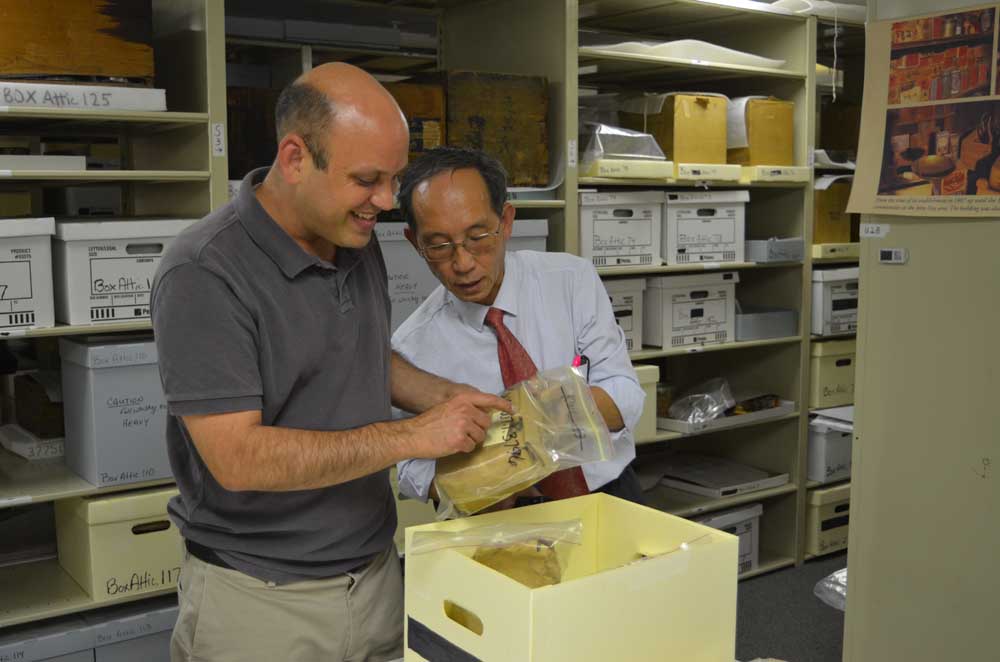Grant will help archive Kam Wah Chung documents
Published 1:00 pm Tuesday, June 25, 2019

- Eric Brand and Prof. Zhao Zhongzhen from the School of Chinese Medicine in Hong Kong look at herbal specimens found at the historic Kam Wah Chung store in the archives building in John Day.
A recent grant announcement is good news for researchers interested in the Kam Wah Chung Historic Site in John Day, a designated national landmark.
The Oregon College of Oriental Medicine in Portland has been awarded a $39,610 grant by the State Library of Oregon to support a collaborative project between the college and the historic site called “Kam Wah Chung: A Historical Archive of Chinese Medicine in Rural Oregon.”
The grant will support in the 2020 fiscal year the creation of an online digital archive that will include images and translations of various Chinese medical artifacts stored at the Kam Wah Chung site.
The announcement was made by Beth Howlett, vice president of communications and academic services at the college. In October 2018, she and Dr. Eric Brand, who studied under Professor Zhao Zhongzhen, participated in a video shoot at Kam Wah Chung for the American version of Discovery Channel.
Zhao, a Chinese expert on oriental medicine, participated in a video shoot on the same subject at Kam Wah Chung two months earlier for the Chinese version of the Discovery Channel.
Last year, according to site curator Don Merritt, a 10-year project to scan about 20,000 documents discovered at Kam Wah Chung was completed — three years ahead of schedule.
This is the largest collection of Chinese documents in North America outside of British Columbia, he said. About 6,000 of the documents are in Chinese, and plans called for a small committee of translators to work on the documents in batches to ensure quality control, he said.
The history of the Kam Wah Chung site dates back to the 1860s gold rush in Grant County, when many miners were Chinese immigrants. An estimated 2,000 Chinese men lived in the “Tiger Town” part of John Day by 1885. Two Chinese immigrants bought the Kam Wah Chung business in 1888 and expanded it into a grocery, dry goods store and clinic.
Ing “Doc” Hay made diagnoses using pulsology and offered herbal medicine to the burgeoning Chinese population and others as an alternative to Western medicine. Lung On, who spoke both Chinese and English, ran the general store and facilitated communication between Chinese and American settlers.
In 1967, while surveying for a new park, John Day city staff discovered the ownership deed for the site. When volunteers opened the long-closed building, they found the interior just as it was in 1955, with food in the kitchen, a stock of dry goods and medicinal herbs and Hay’s tools on the apothecary table.
The college’s grant-funded project will focus on Chinese medical objects and other items that have been cataloged and translated by the college’s students and faculty.
The resulting digital archive will be available to the public and will be of interest to anyone concerned with Oregon history, the Chinese immigrant experience in the American West or traditional Chinese medicine and herbal practice.



